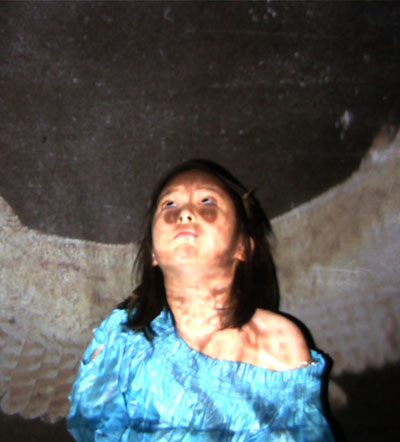
Sung Hwan Kim, Washing Brain and Corn, 2012 © Sung Hwan Kim

Once seen as an obscure and elusive genre, performance art has been gaining public awareness over the past decade. But it still lacks a permanent presence in a museum setting, historically because of its anti-institutional nature and recently because of its time-based and spontaneous tendencies. This summer Tate Modern opens The Tanks: Art in Action, a 15-week inaugural series for its new exhibition space, the first of its kind dedicated to live and performance art. The former Bankside Power Station’s oil tanks provide the perfect setting for the multitude of media found in live art. Dance, large-scale installation, film, and soundscapes by the genre’s most cutting-edge artists fill the underground tanks, fostering a very physical interactive experience.
Performance art deals with the desire to engage with art without relying on an outside object—to use one’s body as the artistic tool. Belgian choreographer Anne Teresa De Keersmaeker exemplifies this notion with an adaptation of her seminal performance piece Fase: Four Movements to the Music of Steve Reich. Keersmaeker responds to Reich’s repetitive compositions with synchronized, metronomic movements, resulting in a dizzying and bemusing display. The Tate’s first commission for the Tanks is of the interdisciplinary video artist Sung Hwan Kim, who’s incorporated actors, excerpts of Rainer Maria Rilke, a girl with a beating heart at the top of her neck, paintings, and sculpture into his live work in the past.
Tate: Art in Action runs 18 July-28 October 2012
Slideshow
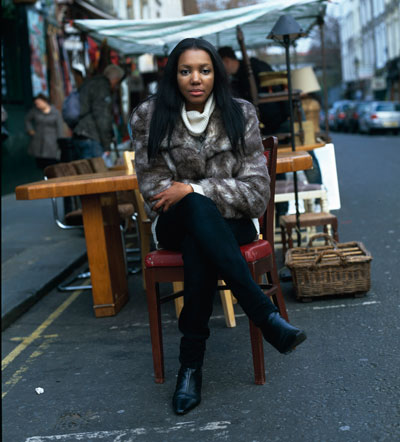
Swaziland Emely Dlamini, Swaziland John McCafferty © John McCafferty

As the Olympic games descend on London this month – an event Londoners will likely meet with ambivalence, agitation and hopefully just a little bit of excitement – the Photographer’s Gallery will launch an outdoor exhibit celebrating the city’s rich ethnic composition. London has the kind of polyphony of culture to rival Astoria, Queens; that’s 300 languages spoken and more than 50 non-British communities contributing to it’s ever expanding cultural make-up.
The Photographer’s Gallery has commissioned 204 international photographers to portrait London’s émigré community – residents born in each of the 204 countries competing in the Olympic and Paralympic games that now call London home. Emerging photographers will feature alongside established names such as Toby Glanville, Anders Petersen, Jim Goldberg, Rankin, Stefan Ruiz, Dryden Goodwin, Karen Knorr and Catherine Yass. The entry for British-born resident is a portrait of fashion designer Alexander McQueen, photographed by Andres Serrano a year before his death in February 2010.
The photographs can be viewed in East London’s Victoria Park from 27th July – 10th August.
Slideshow
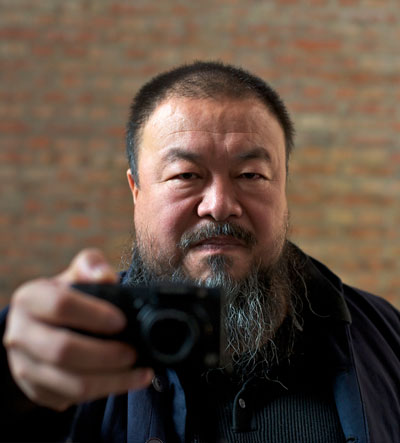
a scene from Alison Klayman’s AI WEIWEI: NEVER SORRY. Photo by Ted Alcorn.

Alison Klayman began making a documentary on Ai Weiwei in 2008, at what must have seemed like a summit of notoriety for the artist. He was in the middle of the Sichuan Earthquake Names Project, an attempt to uncover the death toll from the 2008 Sichuan earthquake, which the Chinese government refused to name. He had just designed the groundbreaking Bird’s Nest Olympic stadium and immediately denounced the Beijing Olympics in the international press. He had been an opponent of the state for years, with his explicit underground artwork and interest in Western ideas; now he willingly became an open target.
And this is all years before Ai’s infamous 81-day incarceration. Part of what makes “Ai Weiwei: Never Sorry” so compelling is that the artist’s life—or at least the narrative that Klayman has extracted—seemingly never stops revving up. As a young man Ai railed against an oppressive cultural heritage in Dropping a Han Dynasty Urn and the Study of Perspective series. He has become more preoccupied with the present in his later career, waging campaigns against the earthquake secrecy and the jailing of Chinese activist Tan Zuoren with dogged endurance. Integral in his mobilizing efforts are his website and Twitter account, which give off an energy and inspiration that “Never Sorry” makes palpable. For dissidents, the young, and any Chinese citizen unwilling to ignore the rest of the world, Ai is a vital figure.
(more…)
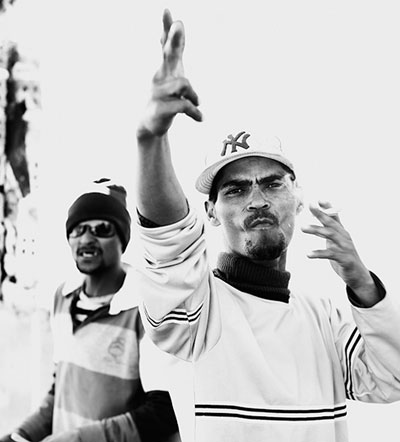
© Candy Kennedy

At seven and a half months pregnant, Candy Kennedy and her partner left the sandy desserts of Dubai for the Cape Flats in South Africa. The Cape Flats are notorious as the home of the infamous South African gangs, as a result making it one of the unsafest parts of the world. “Originally the apartheid’s dumping ground” as Kennedy describes, the Cape Flats became home to the “coloured” by force in the 1950’s. Most gang members in the region are mixed in race and range from black, Khoisan, Malay and South Indian ancestry. There are some exceptions however, such as “Whitey”, a caucasian gang member Kennedy met during her journey. These men and women are mostly from dysfunctional families and lack alternatives in terms of career. Becoming a gang member becomes a vital part of their identity, much like the Yakuzas of Japan. The most notorious gangs are referred to as the 26s, 27s, and 28s and are highly organized and controlled from within prison cells. The gangs have their own code of honor and as an ex-gang member described to Kennedy, for the youth it is similar to“joining the army or entering a university”. Most steal and commit crimes to hang around unlicensed, speak easy bars called “Shebeens” and to buy their next fix of “Tik”– the street name for methamphetamine, which provides them with confidence and a sense of being invincible.
Slideshow
(more…)
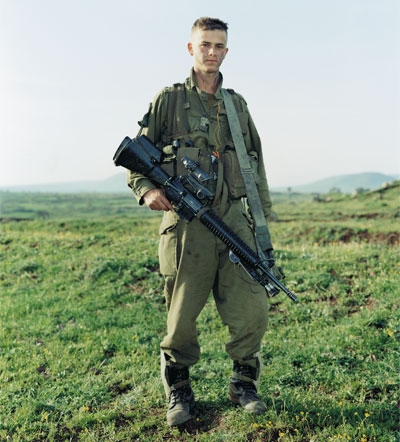
Omri, Givatti Brigade, Golan Heights, Israel, March 29, 2000

After almost 25 years of being one of Holland’s most interesting portraitists, photographer Rineke Dijkstra is getting her major mid-career survey in America. After premiering at SFMOMA,
Rineke Dijkstra: A Restrospective comes to the Guggenheim this summer, showcasing Dijkstra’s elegant light touch and acute eye for emotional currents. Though she’s searched for unguarded moments in adult subjects, most notably in mothers post-delivery, Dijsktra’s long-standing topic has been youth. In portraits of children and teenagers at parks, dance clubs, and beaches she gleans the earnest, half-formed quality that lies behind any posture or pose of adolescence. Her subjects stand without accoutrements or really much in the way of background, but each photo achieves a beautiful balance between delicate color and light effects, and the glowing openness of the face in the frame.
Dijkstra’s other exploration of the young—the one that’s garnered her the most attention—is an epic time-lapse method. The Almerisa series, which began in 1994 and continues today, comprises eleven photos of a young Bosnian refugee taken once every 1 – 2 years. The series begins with Almerisa at age 6 and its latest installment, taken in 2008, includes Almerisa’s own baby.
Slideshow
(more…)
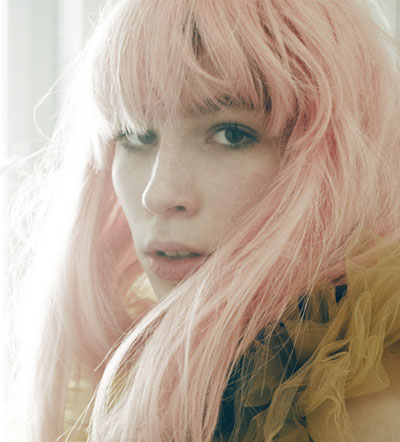
© Niclas Heikkinen

A city that has often been referred to as “the old New York,” Berlin is a place where free spirits migrate to claim as their home, where creativity flourishes, and where reinvention rules. Old apartments from DDR Germany are now used as nightclubs, which tell of East Berlin’s transition from communism to democracy. Like so many others, Niclas Heikkinen, a Belgium native, fell in love with Berlin and the people he encountered there. Ann, a charming transgender model; Suzana, a wild and enigmatic character, full of confidence and wonder; and Paul, one of countless earnest young men comfortable in his own skin. Heikkinen tells PLANET, “Each chance encounter was something I wouldn’t have ever imagined. It’s beautiful when such unexpected friendships form and become such an integral part of your life.” PLANET is pleased to present portraits from Heikkinen’s ongoing series on these free spirits and their vibrant souls, which are what make Berlin such an enchanting city.
Forever traveling, Heikkinen envisions a road trip across the U.S. with stopovers at barn dances and rodeos as his next trip. In the meantime he keeps busy working with cutting-edge fashion brands like Neil Barrett, who will release a Heikkinen-helmed short film this year.
Slideshow
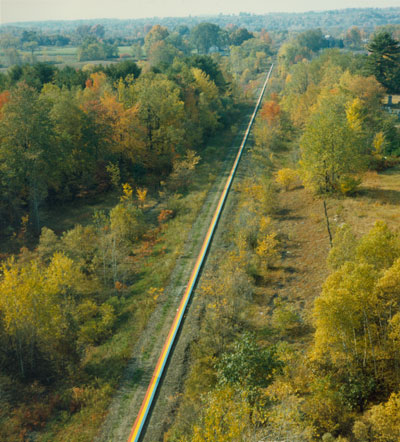
Stephen Long, 1968 © Patricia Johanson

This summer the Museum of Contemporary Art, Los Angeles is giving the land art movement its long-overdue, very first retrospective. Ends of the Earth: Land Art to 1974 looks at a small chunk of land art’s history – barely a decade, from its birth in the sixties to its commercial overhaul in the mid-seventies – and attempts to untangle the messy motivations behind it.
Land art was singularly revolutionary in a period full of revolution. While artists in New York and LA were using deliberately worthless trash as sculpture material or creating works with a silkscreen printer instead of their hands, practitioners of land art literally removed themselves from the art institution. They created work out of raw firmament on sites chosen not only for their workability, but for their remoteness as well. Land art was all natural (pieces were shaped out of the environment, never brought in from somewhere else), unmoving, and purposefully left to the mercy of the elements just like any other organic creation. It was as far from the art machine of galleries, collectors’ auctions, and museums that you could get. Ends of the Earth portrays land art’s origins for what they were: equal parts thought-provoking, exploratory, and reactionary.
Slideshow
(more…)
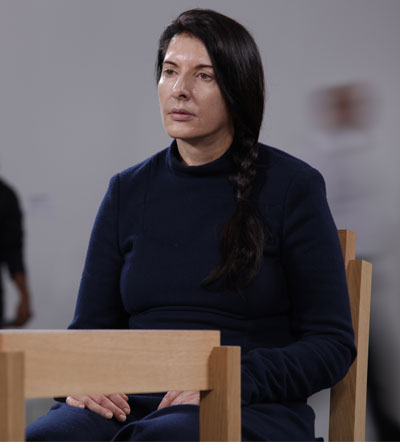
Marina Abramović. Photo Credit: David Smoler

Over the stretch of her thirty-year tenure as performance art’s matriarch, Marina Abramovic has unceasingly pushed the boundaries of the corporeal. In the Spring of 2010, the Museum of Modern Art housed a retrospective of her performances to date, as a troupe of young artists re-enacted highlights of her earlier work. The centerpiece of the show,
The Artist is Present, is explored this month in a new documentary. Evolving from a previous performance –
Nightsea Crossing – in which she and Ulay, her former lover and collaborator, would sit silently, eye to eye, hour upon hour. This time, Ulay was to be replaced by whoever should wish to partake, as the audience was invited to silently commune with Abramovic for the duration of their choosing.
Filmmaker Matthew Akers originally approached the prospect of filming Abramovic with a healthy skepticism: “I had been to school for sculpture and I’d never witnessed great performance art so I was suspicious. When I met her she was incredibly charming, we hit it off right away, but I told her, if we do this, you can’t have any editorial control, that means if I find out stuff that’s less flattering to you, you’re going to have to let me use that. She said – listen little baby – she calls everyone little baby – you can have total control, I’ll give you the keys to my apartment, don’t worry – and about a week later she gave me the keys to her apartment.”
(more…)
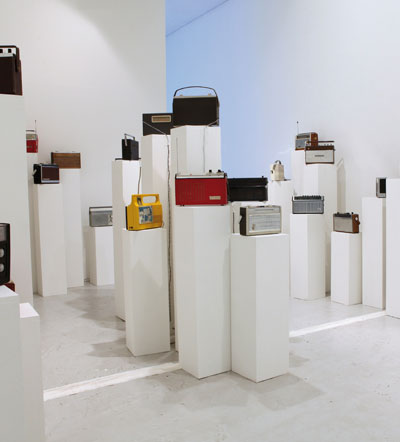
Dans l'(((Onde))), installation view galerie du jour agne`s b. Paris

This week agnès b. Galerie opens
Musique Plastique, a lively multimedia exhibition that was first shown in Paris last year. “Musique Plastique” asks a loaded question: What is the relationship between music and visual art? Do the two creative impulses come from the same place, or do they encourage and inspire one another? Why are so many musicians compelled to paint, and vice versa?
“Musique Plastique” is small, but its ambitious scope—post-punk, synth pop, folk, video, photography, sculpture—does its best to answer these questions. The show’s biggest names are probably Jonas Mekas (from the art world) and Thurston Moore (from music), but every player involved is fascinating. Daniel Johnston, the American lauded singer- songwriter who’s worked on everything from rock operas to a documentary about his own schizophrenia, will present his visual art. Swedish electronic artist Tobias Bernstrup will share his unique process of using musical performance as a step to making visual art. Étienne Charry, who since his days as the guitarist for Oui Oui with Michel Gondry has become a French pop chameleon, will show his experimental spirit visually as well. In all, twenty musician-artists are represented.
Musique Plastique opens June 14th at agnès b. Galerie Boutique. A compilation of music featured in the show is available for free at www.50howardstreet.com.
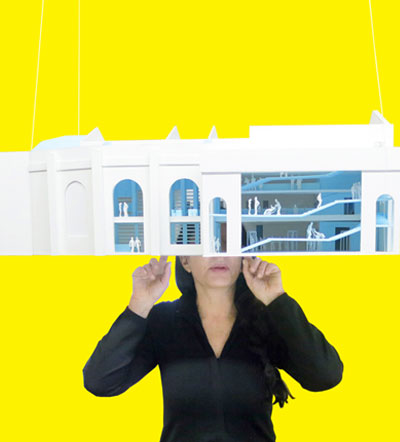
Marina with Study Model OMA

Rem Koolhaas and Shohei Shigematsu of the Dutch architecture firm OMA will lead the design and construction of Marina Abramović’s performance center, the Marina Abramović Institute for the Preservation of Performance Art (MAI). The Institute, for which funding is currently being procured, will be located in a former theater in Hudson, New York. The large space is designed to host long-duration performances as well as workshops, lectures and festivals, all centered on time-based, performance, or otherwise fleeting art—the work that can’t be stored in a museum. The purpose of MAI is to preserve the history of immaterial art while also creating a laboratory to explore new collaborations and cross-genre practices.
OMA seems a proper fit for Abramović’s institute. Founded in 1975 by Koolhaus and others, the firm has designed many innovative art spaces around the world, including the irregular, inverted Casa da Música in Porto (2005), and the vertically “stacked” Wyly Theater in Dallas (with REX, 2009). Besides the stadium-like main performance space, which will seat an astonishing 650 people, MIA will have rooms specifically designed for study, meditation, exercise, and crystals.
Slideshow





 Facebook
Facebook Permalink
Permalink Digg
Digg Reddit
Reddit LinkedIn
LinkedIn StumbleUpon
StumbleUpon Tumblr
Tumblr











